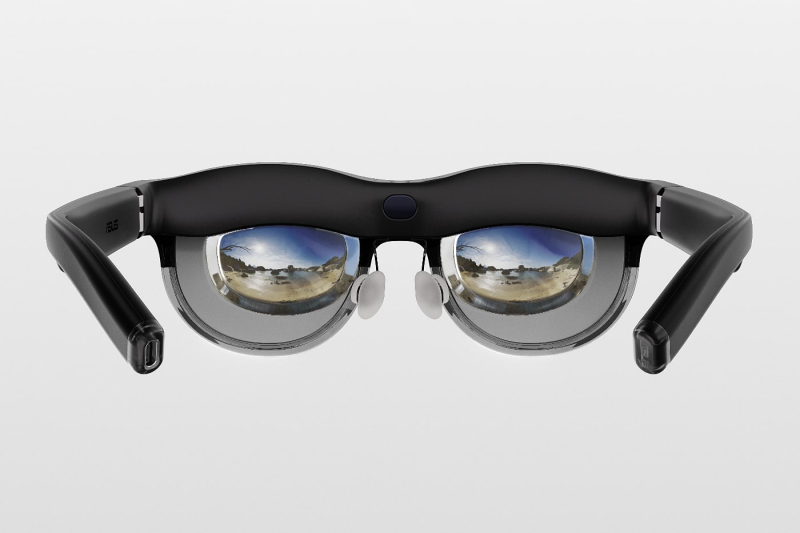
© Asus
To work faster, some people need a second or even a third screen. But this is sometimes difficult to achieve when traveling or trying to work outside the office. ASUS' solution: replace the screens with augmented reality glasses. As Apple prepares to launch its Vision Pro headset, the computer manufacturer is taking advantage of CES 2024 in Las Vegas to present its ASUS AirVision M1 glasses.
The ASUS AirVision M1 is a wearable display for multi-taskers https://t.co/6n2OoQAVeT pic.twitter.com/J1duzzGca0
— Engadget (@engadget) January 10, 2024
Glasses instead of screens
At first glance, one might think that it is about 'a competitor to the Vision Pro. However, the ASUS AirVision M1 is a simpler product. Indeed, this is not a full-fledged computer, but simply allows you to replace PC screens with an augmented reality experience. In essence, once the glasses are connected to a PC, they project up to three virtual screens that the user can anchor in their environment to work.

© ASUS
ASUS thinks these glasses can be useful in certain scenarios. For example, if someone has a small office, they can use AirVision instead of installing multiple screens. The product would also be practical for people who want to work on several screens while traveling (on the plane), for example. In addition, using AR glasses instead of screens allows for more privacy. Otherwise, ASUS indicates that this experience could also appeal to gamers.
🆙ASUS初のウェアラブルディスプレイ、3DoF対応の「AirVision M1」を発表。フルHDのマイクロOLED搭載、広い垂直視野が特徴https://t.co/ORWQeEke9G pic.twitter.com/M2SwcXfoQS
— エルミタージュ秋葉原編集部 (@hermita_akiba) January 10, 2024
Price and availability unknown
As for the technical details, ASUS says that the augmented reality experience is projected by Micro OLED technology. The AirVision offers FHD resolution and a maximum brightness of 1 100 nits. Otherwise, these glasses have 3 degrees of freedom positioning, which means that even when the user moves their head, the location of the virtual screen does not change.
This allows the user to use the virtual screen, while maintaining contact with their environment, to look at the physical screen of their PC, read a paper document, or even chat with a colleague. In addition, for each virtual screen, the user will be able to choose between a vertical orientation or a horizontal orientation, and choose between the ratios 16:9, 4:3, 21:9, and 32:9.
To control the glasses, ASUS placed a touchpad on the frame. This allows for example to control video playback, or to select the virtual screen to highlight. The brightness adjusts automatically, but the user can also adjust this setting using the touchpad.
Unfortunately, at the moment, it is not known when the product will be released. will be marketed. And we don't know at what price it will be sold.
- At CES in Las Vegas, ASUS presents the AirVision M1 glasses
- These are a product that connects to the user's PC and allows them to work on several virtual screens, in augmented reality
- Although the format is quite similar, it is not a direct competitor to Apple's Vision Pro headset, which is a computer in its own right
📍 To not miss any news from Presse-citron, follow us on Google News and WhatsApp.
[ ]

